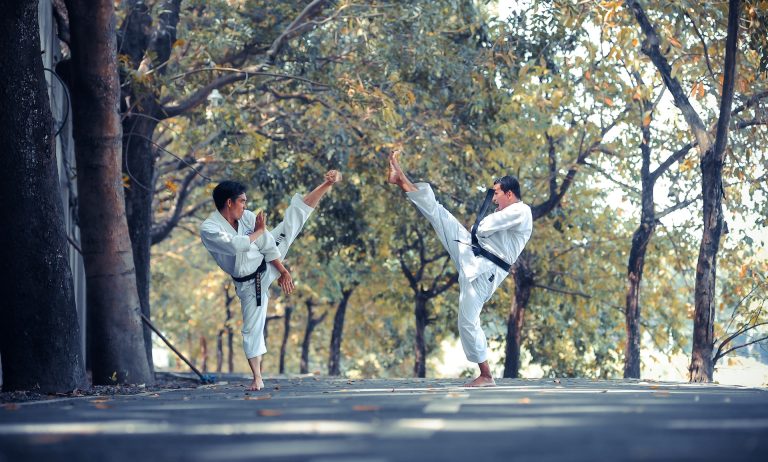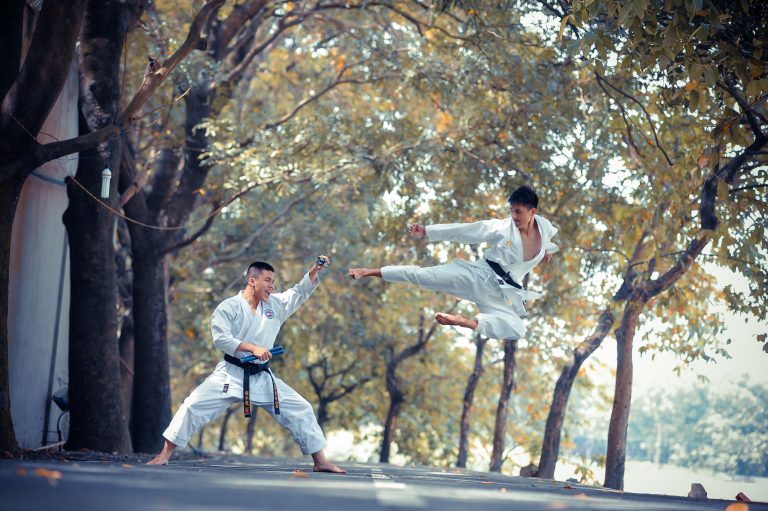What Is Karate? History, Benefits, and Training
Karate is a traditional Japanese martial art used in self-defense and physical fitness. It is well known for its complex techniques, powerful form of striking, and effective use of blocks. Karate has been around for centuries, evolving from its early roots in Okinawa and later branching out to become a worldwide phenomenon. In this comprehensive guide, we will discuss the history of karate, what it is today, the benefits of practicing karate, and tips for beginning your own karate training.
History of Karate
Karate has its roots in Okinawa, Japan. According to the International Okinawan Karate Research Society, karate was first developed in the early 15th century as an unarmed form of combat developed by the people of Okinawa, who were prohibited from carrying weapons. This unarmed form of combat was based on techniques from Chinese martial arts, as well as local Okinawan traditions. Over the centuries, karate has evolved and spread around the world, with different schools and styles developing in different countries.
What Is Karate?
Karate is a traditional Japanese martial art that focuses on self-defense through a variety of powerful strikes and blocks. It combines physical conditioning with mental discipline. Practitioners of karate can increase their stability and balance, improve their strength and flexibility, increase their speed and accuracy while striking and blocking, and learn vital self-defense techniques. Karate has multiple styles, each with its own unique elements and specialty areas, as well as philosophical roots that influence the practice.
In competitive karate tournaments, practitioners may practice kata (formal patterns of movements), kumite (tactical sparring exercises), and tsuki waza (striking exercises). Practitioners may also compete in forms competitions, which involve performing specific pre-defined movements within a certain time limit. Practitioners who compete in forms competitions must be proficient in many different strikes and blocks to achieve a successful performance.
Benefits of Practicing Karate
Karate is an excellent form of physical exercise that can provide a wide range of benefits for practitioners. These include physical benefits such as increased endurance, better balance and stability, improved coordination and agility, increased flexibility, and improved posture. Karate also offers mental benefits such as improved focus and concentration, better self-confidence and self-control, increased mental discipline, improved memory, and better problem-solving skills and decision making.
Karate also provides numerous health benefits for practitioners. These include increased cardiovascular fitness, better weight management, increased muscle tone and strength, improved blood circulation and lower blood pressure, better sleep quality, improved coordination and agility, and improved balance and stability.
Tips for Starting Your Own Karate Training
Before you begin your journey into karate training, there are some important tips to keep in mind to ensure that you have the best experience possible.
- Find the right school. Firstly, you’ll need to find a karate school near you. Take time to research different schools to find one that best fits your goals and needs. Consider the experience of the instructors, the quality of the facilities, the class styles available, and other factors that may be important to you.
- Get the right equipment. Karate practitioners should always have the right safety gear available for training sessions. This includes a sturdy pair of martial arts shoes or sandals, a martial arts uniform or gi, a mouth guard, hand wraps or gloves to protect your hands from strikes, body armor for sparring sessions (when appropriate), and any other items that your school or instructors suggests.
- Practice regularly. To get the most benefit from your karate training, you should practice on a regular basis. Even if you can’t attend classes every day or week, aim to practice at least once or twice a week to keep your skills sharp. Regular practice will help you to become more proficient in karate techniques such as stances, punches, kicks, blocks, and forms.
- Set realistic goals. No matter how experienced you are in karate training, it’s important to set realistic goals for yourself. This can be anything from attaining a higher belt rank or placing higher in tournaments to improving your fitness levels or learning more advanced techniques. Setting smaller goals over time can help keep you motivated to continue your training.
- Strive for progress. While competing against others is not always necessary or appropriate in karate training, it’s important to strive for progress in all aspects of your practice. Set aside some time each week to focus on areas of your technique or form that need development and use this time to refine your skills. Having an instructor review your performance can also help you track your progress.
Conclusion
Karate is an ancient martial art with a rich history in Japan and other parts of the world. It offers physical benefits such as improved strength and flexibility as well as mental benefits such as heightened focus and cognitive skills. To get the most out of your karate training, it’s important to find the right school and equip yourself with proper safety gear. Additionally, set realistic goals for yourself and strive for progress in all areas of your practice. Whether you use karate for self-defense or fitness purposes, following these tips can ensure that you have a rewarding experience with the ancient art of karate training.
What Is Karate? History, Benefits, and Training
Karate is a martial art that originated in Okinawa, Japan. It is a combination of self-defense techniques, physical exercises, and mental discipline that have been developed and refined over centuries. Karate is now practiced all over the world and has become a popular activity for children and adults alike. In this blog post, we will answer some of the most frequently asked questions about karate, including its history, benefits, and how to get started with training.
The History of Karate
Karate has a long and fascinating history that spans over 700 years. The origins of karate can be traced back to Okinawa, an island in southern Japan. Okinawa was an independent kingdom until it was annexed by Japan in the late 19th century. During this time, a number of different styles of martial arts were developed on the island, including karate.
The modern form of karate that we know today was developed in the early 20th century by Gichin Funakoshi, a Japanese martial artist who had trained in several different styles of karate in Okinawa. Funakoshi introduced karate to Japan and later to the rest of the world, where it became popular as a form of self-defense and physical fitness.
The Benefits of Karate
Karate has many benefits for both physical and mental health. Here are some of the most significant benefits of practicing karate:
1. Improved physical fitness: Karate involves a lot of physical activity, including punching, kicking, and grappling. Regular practice can improve strength, flexibility, and cardiovascular health.
2. Increased self-confidence: Karate is a form of self-defense that teaches students how to protect themselves in real-life situations. This can increase self-confidence and reduce anxiety.
3. Better focus and concentration: Karate requires focus and concentration, which can improve mental clarity and help students perform better in other areas of their life.
4. Stress relief: Karate can be a great way to relieve stress and tension, as it involves physical activity and mental discipline.
How to Get Started with Karate Training
If you’re interested in trying karate, here are some tips to help you get started:
1. Find a reputable dojo: Look for a karate school or dojo that has experienced instructors and a good reputation in the community.
2. Start with the basics: Most karate schools will start beginners with basic techniques and forms, so be prepared to spend time learning the fundamentals.
3. Practice regularly: Consistency is key when it comes to improving in karate. Try to practice a few times a week to see progress.
4. Listen to your body: Karate can be physically demanding, so it’s important to listen to your body and take breaks when needed.
5. Wear the proper gear: When practicing karate, it’s important to wear the proper gear, including a gi (traditional karate uniform) and protective gear for sparring.
In conclusion, karate is a fascinating and dynamic martial art with a rich history and many benefits for both physical and mental health. Whether you’re interested in self-defense, fitness, or simply learning a new skill, karate is a great option. Remember to find a reputable dojo, start with the basics, practice regularly, listen to your body, and wear the proper gear to get started with karate training.
Inhaltsverzeichnis





